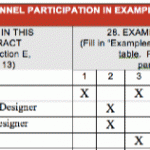This will be more than a “Drip Review.” I’m going to touch on how my overall email strategy has changed and why Drip’s features allow me to bring that to life.
Email marketing and our relationship with email have transformed in recent years.
That evolution has forced me to rethink how I send emails to the thousands of friends in the Help Everybody Army.
Today, I want to share with you why I decided to switch email providers after almost ten years (from MailChimp to Drip).
After reading through this, you might consider how your email strategy might evolve as well.
Every Entry On Your Email List Is A Person
If there is one thing I cherish, it’s my subscribers. I lovingly refer to them as the “Help Everybody Army.”
A fool who didn’t understand how I feel about these people might refer to them as my “email list.”
I care deeply about every single person on that list. I’ve been fortunate enough to meet many in person. It’s my mission to enhance and improve their work life.
That’s always going to be the constant in my email strategy. See each email as a person and treat them accordingly.
But Our Relationship With Email Is Changing
Spam used to be an annoyance we didn’t think much about. Now every email we receive is a potential threat.
Justifiably, more and more of us are using spam filters. And those spam filters are getting stronger. Not to mention our IT teams are constantly combating email.
In addition, I feel a bit exhausted by email. You see, I’ve subscribed to email lists too. Today, I don’t read those emails like I would have just five years ago.
You and your clients are probably experiencing the same thing.
Here’s how my email strategy has changed to address this new reality.
The “Thank You” Rule
I used to write a blog post and send it through email every week. My philosophy was: send one email per week.
As someone pointed out just yesterday, that’s changed. My new rule is I don’t send an email unless I’m certain someone will be compelled to reach out and thank me.
And when people send those thank you notes, it tests and helps inform my decisions on what to send.
I call it the “Thank You Rule.” It’s a high bar, but an important one.
I’ve set a quality threshold with a real-world feedback loop.
The Thank You Rule In Drip
In Drip, the “Thank You Rule” takes on a whole new life. When people subscribe to my list, they get put in what’s called an email workflow (sometimes referred to as an autoresponder or funnel). My system has worked like this for years.
It starts with my Proposal Writing Crash Course and then a few “Best Of” emails. But all the while, new subscribers would still get my latest posts.
In Drip, that workflow is much longer. I now have a year’s worth of emails set up in there. And that number will grow.
Brand new subscribers will no longer receive my latest blog posts. Until they are through the initial workflow, they will only receive emails I’ve actually been thanked for.
A More Personal And Personalized Email Experience
With Drip, I can create a much more personalized experience.
Here’s one example.
Historically, I’ve let people sign up with just their email address.
Sure, I’d like to know the name of every single subscriber. And I’d like to address everybody by their name.
Here’s the problem. I’ve found if you ask people for their first name, inevitably someone will submit their full name in that field. Or they will write “beth” instead of “Beth.”
So, then my email reads:
“ Hi beth Johnson,”
That’s not very personal.
In Drip, I can set up rules that fix that issue. Here’s an example below:

Who Are My Students?
Yes, I have a lists of every Proposal Management Mastery student, every Win Writing student, everybody who ordered a Brutally Honest Proposal Critique, everybody who purchased the deluxe edition of Proposal Development Secrets , and everybody who brought me out to present my proposal workshop to their firm or organization.
But frankly, I’ve had to manually reconcile those lists to determine that Will C is in Proposal Management Mastery and Win Writing and has ordered a Brutally Honest Proposal Critique.
That’s manageable with 20 students. But with hundreds of students (or clients), that kind of manual reconciliation is tough to do.
Drip has a variety of sophisticated integrations that automatically track which of my students bought what, when, and for how much. It will also automatically calculate each student’s lifetime value (which I discussed in my post on marketing budgets).
I was also able to import old information into Drip in a way that will give me a complete record of all my students (new and old).
So, now when Katy switches firms (or emails) all that history will stay with my record of her.
That’s pretty powerful.
Better Automation
Email automation has become much more powerful over the last few years.
I’m going to stay with the Katy example because I was just messaging with her.
Back in September 2015, when Katy joined Proposal Management Mastery, she raised a very good question.
She joined as soon as it opened up, why was she still getting emails promoting the course?
With MailChimp, there was no way around that. But in Drip, I can set a “goal,” like joining Proposal Management Mastery that will allow her to skip past those emails.
Essentially, once a subscriber performs an action (like joining Proposal Management Mastery), they get pulled up to where I set the goal.

Email Subscriber’s Journey
Setting up a workflow automation in Mailchimp was painful. And in recent years, I’ve felt they’ve made it harder to map out the subscriber’s journey.
In Drip, I can see how each subscriber will proceed through my workflow. I don’t have to imagine it in my mind or draw it on paper, it’s right there on the screen.

In fact, my subscribers’ path in Drip was heavily influenced by this tutorial posted on YouTube. Being able to actually see the workflow someone else set up was so helpful.
When someone subscribes to your list, what’s their journey? Have you thought about that?
What To Take From All Of This
Let me list a few questions you should ask when reevaluating your email marketing strategy.
- How has your audience’s relationship with email changed?
- Do you have a quality threshold?
- How might you use new technologies to improve your audience’s experience?
- When someone joins your list, what’s their journey look like?
Now It’s Your Turn
Have your email marketing strategy or the tools you use changed in the last few years? If so, how?
Share with us by submitting a comment.





Love that visual work flow in Drip. Thanks for your thoughtfullness, and this great information, Matt.
Thank you Katy!